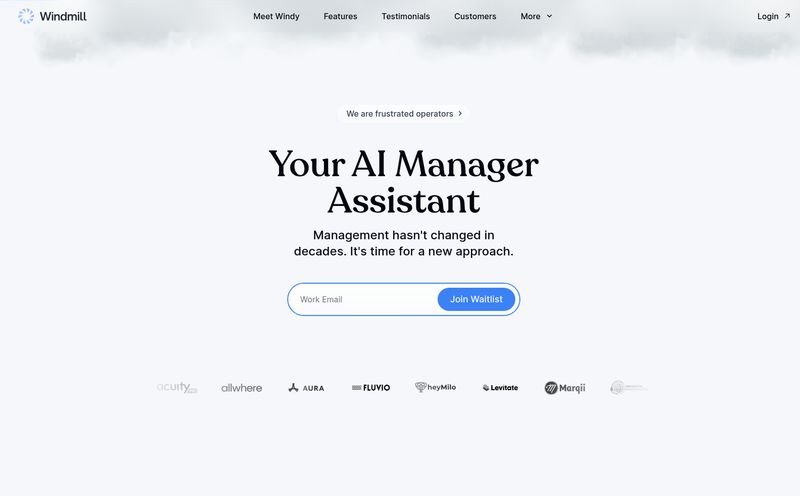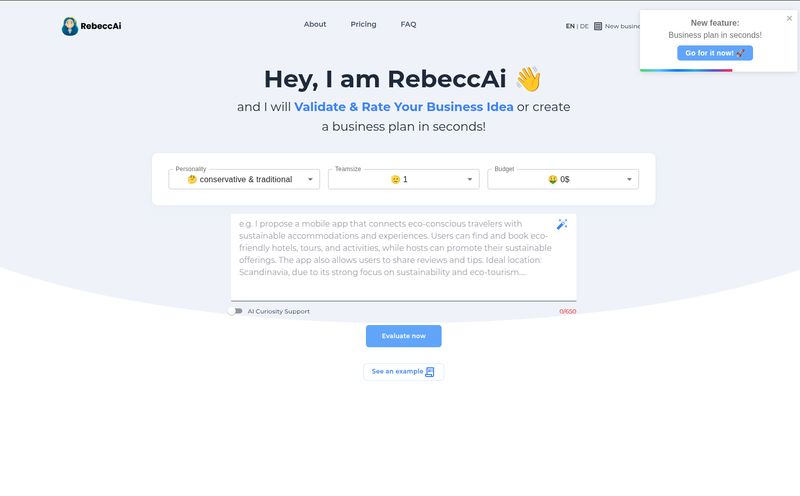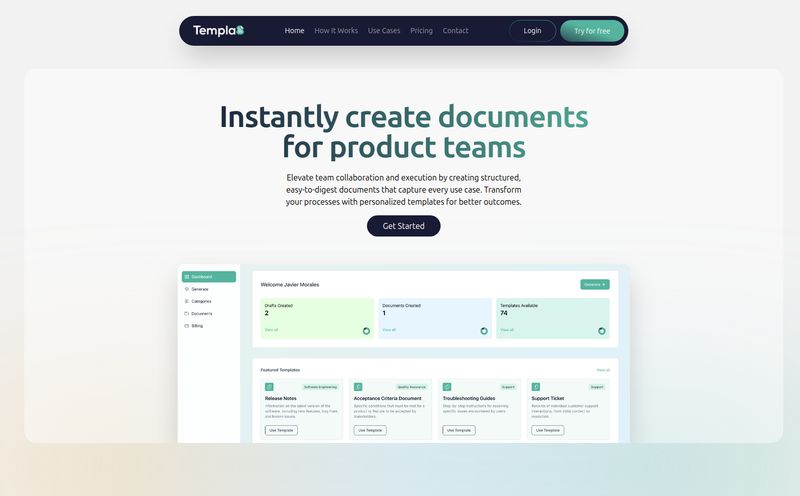If you're in the credit repair game, you know the drill. The clients, the bureaus, the endless paperwork... and the software. Oh, the software. Every month, like clockwork, that subscription fee hits your account. It doesn't matter if you had a slow month or a record-breaking one; the bill is the same. For years, I’ve felt like this was just the cost of doing business. A necessary evil we all just accepted. You find a platform you can tolerate, you build your workflow around its quirks, and you pay the monthly toll.
But what if there was a different way? I've been hearing whispers and seeing some chatter in my usual SEO and business forums about a tool that’s shaking things up. It's called DisputePanda, and its main hook is pretty compelling: no monthly fees. None. Zero. You pay for what you use. My inner skeptic immediately perked up. Is it too good to be true? Or is this the model we’ve all been waiting for? I had to find out.
So, What Exactly Is DisputePanda?
At its heart, DisputePanda is a credit repair software designed for professionals. But it throws the standard Software-as-a-Service (SaaS) playbook out the window. Instead of a fixed monthly or annual subscription for access, it operates on a pay-as-you-go system. Think of it like a top-up phone plan for your business. You're not locked into a costly contract; you simply pay for the specific actions you take, or what they call “attacks.”
This is a fundamental shift. It’s built for the realities of running a credit repair business, where client flow can be a rollercoaster. Some months you’re buried in new sign-ups, and others... well, you’re focused on marketing. A pay-per-use model just makes sense for that kind of ebb and flow, especially for folks just starting their own credit repair business.

Visit Dispute Panda
The AI Difference: More Than Just Templates
Here’s where it gets really interesting for me. The biggest weakness of most credit repair software has always been the dispute letters themselves. For a long time, they’ve just been glorified mail-merge templates. You plug in a client's name, the account number, pick reason #47 from a dropdown menu, and hit print. The problem? The credit bureaus aren't dumb. They've seen these same letters thousands of times. They use e-OSCAR to scan and categorize them, and a template-based letter is just screaming, “I’m a generic dispute from a credit repair company!”
DisputePanda claims to solve this with its AI-Powered letter generation engine. This isn’t just about swapping out a few words. It's about creating genuinely unique letters for each and every dispute. The AI analyzes the situation and crafts a letter that doesn't fit a predictable pattern. They call these “non-static attacks.” In a world where getting past the initial automated filters at Equifax, Experian, and TransUnion is half the battle, this could be a massive advantage. It’s the difference between a bespoke suit and one off the rack—the bureaus can tell.
Let's Talk Money: Breaking Down the DisputePanda Pricing
Okay, this is the part everyone really wants to know. If there are no monthly fees, how do they make money? And is it actually cheaper? And lets be honest, pricing pages can be a bit of a maze sometimes. Here’s my breakdown of their model, which is refreshingly straightforward.
There are a few tiers, but the core concept is the “attack.”
| Plan / Item | Cost | Best For |
|---|---|---|
| Free Plan | $0 to sign up | Everyone. This lets you get in, add clients, and prepare your accounts without spending a dime. |
| Pay-As-You-Go Attack | $17 per attack | The core of the system. One “attack” generates unique letters for a specific dispute item to all three bureaus. |
| Pro Monthly | $1 for 14-day trial, then $197/month | Scaling businesses that prefer a predictable monthly cost and want premium features. |
| Pro Yearly | $1,970/year | Established operations looking for the best value and committing for the long haul. A significant discount over the monthly plan. |
The beauty here is the flexibility. A startup can operate purely on the pay-as-you-go model, keeping overhead at literally zero until they have a paying client. The $17 attack fee covers the AI generation and letters to all three major bureaus, which is pretty fair when you consider the potential effectiveness and time saved. As you grow, you can switch to a Pro plan if the math makes sense for your volume.
The Good, The Bad, and The AI
No tool is perfect, right? After digging in and talking to a few people who use it, here’s my honest take on where DisputePanda shines and where you need to be realistic.
The Advantages I'm Genuinely Excited About
The most obvious win is the financial freedom. Kicking monthly subscriptions to teh curb is a huge mental and financial relief, especially when you're starting out or have inconsistent client loads. But beyond that, the AI-generated letters are the real star. It directly addresses a major pain point in the industry—stale, ineffective templates. The time-saving automation for client management and credit report importing is solid, and the user interface feels clean and modern, not like some clunky software from 2005. It's a powerful combination that feels thoughtfully designed for the modern credit repair pro.
A Few Things to Keep In Mind
Now, for the other side of the coin. Some might argue that at $17 an attack, the cost could add up quickly for a client with many items to dispute, potentially becoming more expensive than a flat-rate subscription. You have to do the math for your specific business model. Also, while the AI is impressive, it's a tool, not a replacement for your brain. You still need to provide it with accurate client data and, more importantly, you need to oversee the process. You are the expert; the AI is your very smart assistant. Its effectiveness is directly tied to the quality of the information you feed it—garbage in, garbage out, as they say.
Who Is This Really For?
I see a few key groups who would benefit most from DisputePanda's approach.
- The Credit Repair Startup: If you're just launching your business, this is a no-brainer. You can build your entire operation with virtually no initial software overhead. You only pay when you have clients and are actively working on their files.
- The Side-Hustler: Running a credit repair business on the side? The last thing you want is a fixed monthly cost eating into your profits. This model is perfect for part-time operations.
- The Frustrated Veteran: If you're tired of your current software's limitations, high costs, or cookie-cutter results, DisputePanda offers a compelling alternative. It’s a chance to try a new, potentially more effective method without a long-term commitment.
Who might it not be for? Perhaps a very large-scale credit repair mill processing thousands of disputes a month might find a high-tier, all-inclusive subscription from another provider more predictable for budgeting. But even then, the unique letter-writing capability might be worth it.
Frequently Asked Questions About DisputePanda
I've been getting a few DMs about this, so let's clear up some common questions.
1. Is DisputePanda really free to start?
Yes. You can sign up for the Free Plan, onboard your clients, import their credit reports, and get everything ready to go without paying anything. You only pay when you decide to launch an actual dispute “attack.”
2. What does a “non-static attack” mean?
This is their term for a dispute round using AI-generated letters. Instead of a static template, the AI creates unique wording for the letters sent to Equifax, Experian, and TransUnion for that specific dispute item, making them less likely to be flagged as generic.
3. Can I mail the letters myself?
Yes. While the platform offers direct mailing services for convenience, you have the option to generate and print the letters to mail them yourself, giving you full control over the process.
4. How does it compare to a tool like Credit Repair Cloud?
They serve a similar purpose but have different philosophies. Credit Repair Cloud is a well-established, subscription-based platform. DisputePanda’s key differentiators are its pay-as-you-go model and its focus on AI-generated unique letters. It's less about which is “better” and more about which model and feature set best fits your business style and budget.
My Final Verdict: A Refreshing Change of Pace
So, is DisputePanda the holy grail of credit repair software? Maybe. For a significant portion of the industry, I think it is. It's not just another piece of software; it's a different business model. It challenges the assumption that we have to be chained to monthly fees.
The combination of a zero-cost entry point and a genuinely innovative feature—the AI letter writer—makes it one of the most intriguing tools I’ve reviewed in a long time. It puts the power back in the hands of the business owner, allowing you to scale your costs directly with your revenue. For that reason alone, it deserves a serious look from anyone in the credit repair space. It's a smart, flexible, and powerful approach, and I'm excited to see how it pushes the rest of the industry to evolve.
Reference and Sources
For the most current information on features and pricing, please visit the official website:
- DisputePanda Pricing Page: https://disputepanda.com/pricing/



